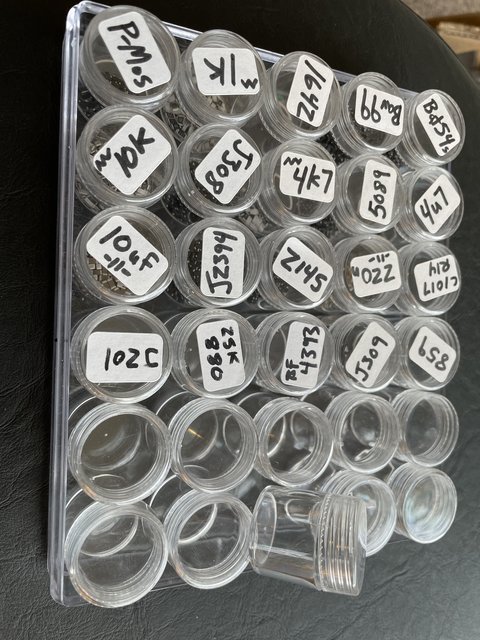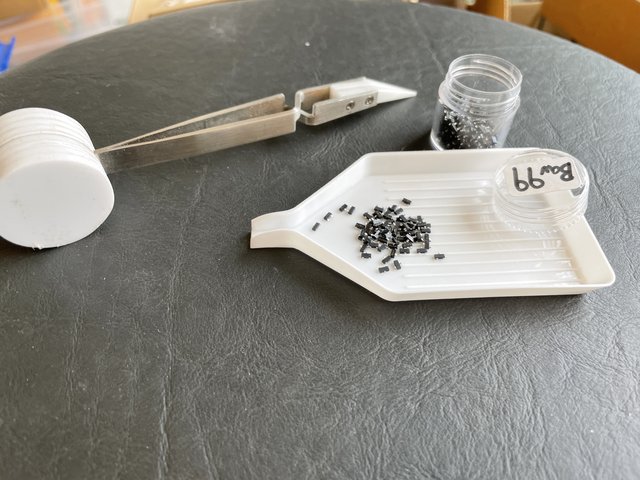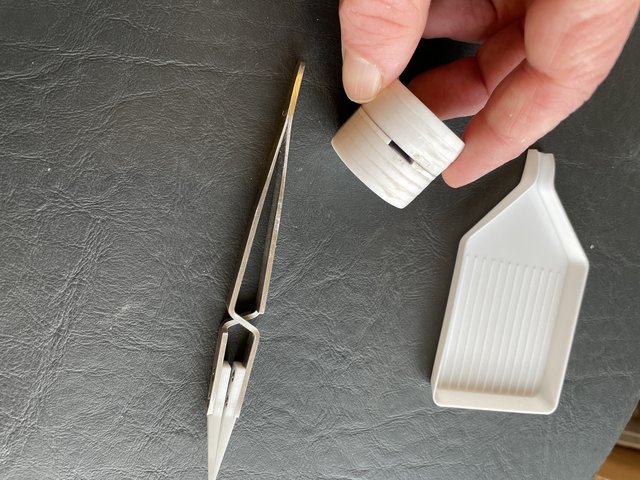Coda
Well-known member
The kind of circuits I have in mind don't have too many germanium components.
So toneless? Everyone knows that the tone is in the Germanium…
The kind of circuits I have in mind don't have too many germanium components.
Wasn't quite that bad, I think Transitors will be easier as the legs aren't so close, future I'll probably just use it to set the corners on chipsSolder paste without a stencil makes me want to just start buying pedals.... or just become a drummer.
The kind of circuits I have in mind don't have too many germanium components.
5150 build Robert?
For sure...I'm the kind of guy that measures out ingredients to precise ratios when cooking whilst having all available counter space occupied by dirty dishes and oh shit my 1/3 cup has gotta be around here somewhere WHY IS COOKING SO HARD.Keep em in the tape reel and that's not an issue, although removing them from the tape is probably the most time consuming part of assembly.
You can use whatever you want... I will say, I built a prototype for an overdrive this weekend that used nasty old ceramic disc capacitors throughout the entire signal path. (330pF all the way up to 1uF) I could have used film, I suppose, but the original used ceramic so that's what I used... It has become my favorite overdrive.
I'm not arguing the theory against ceramics, but I'm also not convinced that the hate is entirely based on objective audible results (vs what I read on a forum) in every case... this ain't HiFi. Don't mind me though, I generally don't modify or "fix" the quirks with original circuits either unless it's obviously broken in an unusable way.
Of course there's no reason we can't mix in some through-hole caps when absolutely necessary. The goal here isn't to torture your soldering skills (or supernaturally sensitive ears), the goal is to cram 10lbs of s**t into a 1/2lb enclosure.



I’d be up for it for sure! But It would have to be the right project. I mean I wouldn’t want to do a full smd board that’s just a Tube screamer or 250+.
Hey! So you aren’t going to start with the SMD low tide in a 1590A enclosure?? Disappointing.
The easiest way is a stencil that is designed specifically for the PCB you're working with. (although not the most economical for one-offs)Anyone have a recommend for stencils? I've seen quite a spread so any direction is appreciated.
Fuck, I bet that’s tight!That's actually not all that uncommon.

I stick to 0805 on my layouts and 0204 for MELF resistors. 0603 is getting into my PIA zone.I’ve never soldered an SMD resistor or capacitor but I’m assuming 0805 will be absolutely no problem and 0603 are a challenge but do able with the hand soldering approach?

Here's a little practice board. I just soldered these 0805s. The first one I used paste on a cold board and preset the resistor. The second, I used a cold board, pre-placed the resistor and used small diameter solder. The last, I pre-warmed the board, dabbed paste on the pads (much easier when it softens into the warm pad) and placed the resistor...then reheated the board to fuse. Really easy.I stick to 0805 on my layouts and 0204 for MELF resistors. 0603 is getting into my PIA zone.


Here's a little practice board. I just soldered these 0805s. The first one I used paste on a cold board and preset the resistor. The second, I used a cold board, pre-placed the resistor and used small diameter solder. The last, I pre-warmed the board, dabbed paste on the pads (much easier when it softens into the warm pad) and placed the resistor...then reheated the board to fuse. Really easy.

